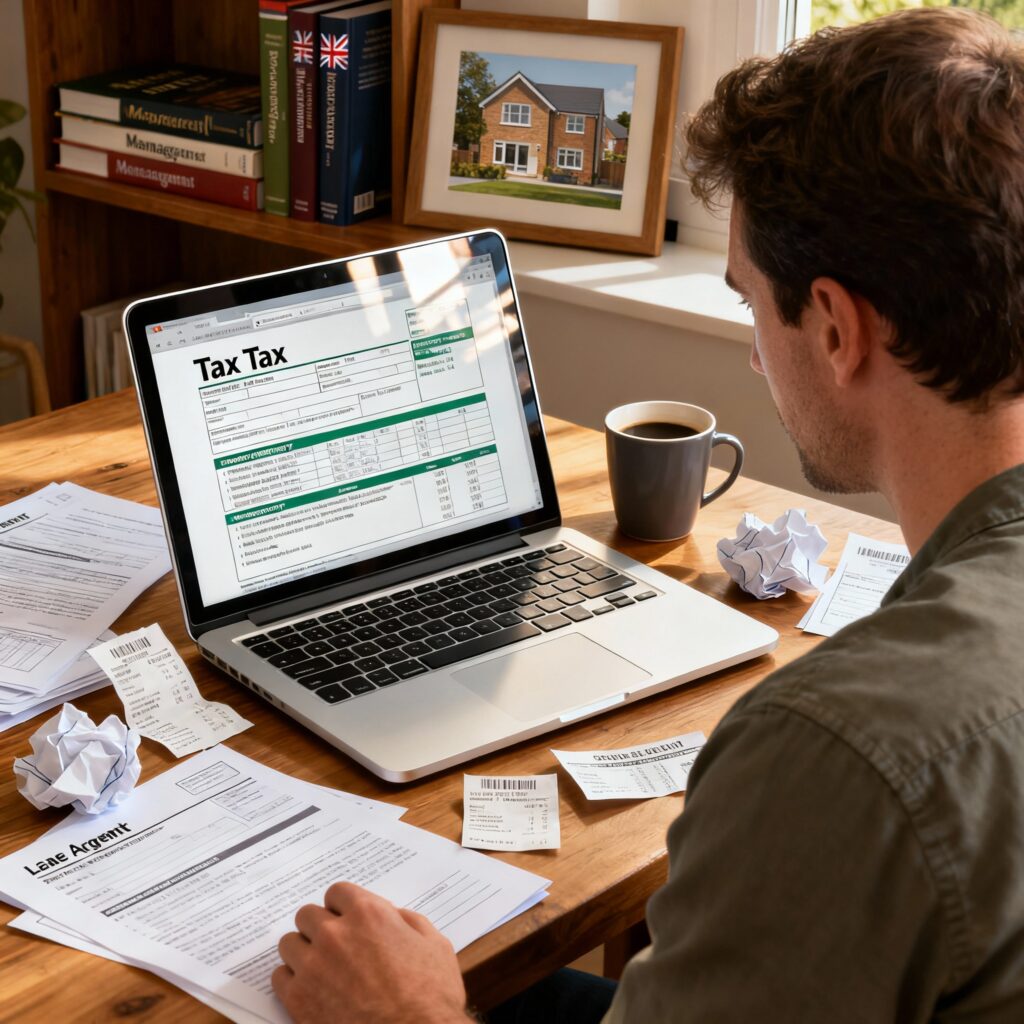Key takeaways:
- Making Tax Digital (MTD) becomes compulsory for landlords earning over £50,000 annually from 6 April 2026.
- You’ll need MTD-compatible software to keep and submit digital records to HMRC.
- Quarterly income and expense submissions replace the old single annual tax return.
- Future rollouts will include landlords earning £30,000+ from April 2027, and £20,000+ from April 2028.
Understanding Making Tax Digital (MTD) for landlords
Making Tax Digital (MTD) is a major change by HM Revenue & Customs (HMRC) to modernise the UK’s tax system. From 6 April 2026, landlords and sole traders with a gross income of £50,000 or more from property or business must keep digital records and send quarterly updates via approved software.
The aim is straightforward: reduce errors, simplify tax management, and give landlords better visibility over their tax position throughout the year. Digital record keeping allows you to track your income in real time and helps HMRC estimate your liability accurately after every quarter.
Finally, the move to digital submissions replaces the old system of one Self Assessment return per year. That means you’ll submit four quarterly updates and a final end-of-year declaration to reconcile your figures.

Who needs to register for MTD and when
If you earn £50,000 or more in total property and self-employment income, you’ll join MTD from April 2026. The next phase extends to those with £30,000+ from April 2027, and finally to £20,000+ from April 2028.
Income for MTD includes all rental earnings before expenses, such as:
| Type of Rental Income | Included in MTD Threshold |
|---|---|
| UK residential property rent | ✔ |
| Furnished holiday lettings | ✔ |
| Foreign property income | ✔ |
| Room rent under rent-a-room scheme | ✔ |
| Pension or employment income | ✖ |
Landlords with less than £50,000 can opt in voluntarily. Doing so early helps you prepare and avoid non-compliance penalties later.
If you own property jointly, HMRC counts your share of the income based on ownership percentages. Married couples default to a 50/50 share unless a Form 17 Declaration states otherwise.
What records landlords must keep digitally
To comply with MTD, landlords must maintain digital records for each property they rent out, recording income and allowable expenses.
You must record:
- Rent received (per property)
- Repair and maintenance costs
- Letting agent fees and insurance
- Mortgage interest and finance costs
- Council tax or service charges paid by you
Here’s an example of how digital record-keeping looks with compatible software such as Xero, QuickBooks or Sage :
| Record type | Example entry | Frequency |
|---|---|---|
| Rent income | £1,200 – April (flat in Oxford) | Monthly |
| Repairs | £125 – tap replacement | Ad hoc |
| Letting fees | £180 – Purplebricks | Quarterly |
Digitally stored data must include transaction dates, amounts, and category labels consistent with HMRC’s reporting categories. Paper spreadsheets will no longer suffice beyond April 2026.

How quarterly submissions and final declarations work
Once enrolled in MTD, you’ll send HMRC quarterly figures through your chosen software. The due dates are usually:
| Quarter end date | Submission deadline |
|---|---|
| 5 July | 5 August |
| 5 October | 5 November |
| 5 January | 5 February |
| 5 April | 5 May |
After the year ends, you complete a Final Declaration by 31 January (as under Self Assessment). This declaration confirms your total income from all sources and finalises your tax bill after adjustments for reliefs and allowances.
If your total taxable income includes both property and trading income, you’ll submit separate quarterly reports—but one Final Declaration covering both.
Choosing the right MTD software
HMRC does not provide its own software, meaning every landlord must use MTD-compatible software for reporting. This can be cloud-based accounting apps like:
| Software name | Key Features | HMRC recognised | Suitable for landlords |
|---|---|---|---|
| Xero | Real-time bank feeds, easy income categorisation | ✔ | ✔ |
| QuickBooks Online | Simple interface with capturing receipts | ✔ | ✔ |
| Sage Accounting | UK landlord-specific expense templates | ✔ | ✔ |
| Hammock | Built specifically for property income tracking | ✔ | ✔ |
When choosing software, consider integration with your bank, how easily you can assign transactions to individual properties, and whether it generates HMRC-ready quarterly updates automatically.
Finally, cloud-based solutions store your data safely and allow you to manage your accounts from anywhere, reducing stress at tax deadlines.
MTD exemptions and how to apply
Some landlords can apply for exemptions if using digital systems is not reasonably practical. This can include:
- Age or disability, making digital use impractical
- Geographical isolation with no reliable internet access
- Religious objections to technology use
If you qualify, you must write to HMRC to request exemption. Each case is reviewed separately, and evidence may be required.
There’s also a temporary exemption for short-term illness or loss of access to digital tools, but you must notify HMRC immediately.
For most landlords, however, MTD compliance is mandatory—and failing to register on time can result in financial penalties.
Benefits of adopting MTD early
Although some landlords view the switch as a burden, there are significant upsides to complying early. Real-time record keeping provides immediate visibility into your profits and tax position. You’ll no longer spend stressful December evenings combing through old receipts!
Benefits include:
- Fewer errors thanks to automation and accurate categorisation.
- Less paperwork and faster preparation at tax time.
- Better budgeting through up-to-date financial snapshots.
By 2028, all landlords earning over £20,000 will be required to comply. Early adopters can therefore spread the learning curve smoothly and gain confidence before full rollout.
Practical steps to get MTD ready
Preparing for MTD takes some upfront organisation. Below are your action steps leading to April 2026.
- Determine your income eligibility. Add up rental and self-employed earnings before expenses.
- Choose suitable software. Use one from HMRC’s approved list.
- Start digital record keeping. Enter all rental income and expenses digitally each month.
- Register for MTD. Sign up on gov.uk under “Making Tax Digital for Income Tax”.
- Test a quarterly submission before April 2026 to ensure everything works.
If you use an accountant, confirm they are registered as an MTD agent—they can file quarterly updates on your behalf.
Frequently asked questions
1. When does MTD apply to landlords?
From 6 April 2026, landlords with income over £50,000 must comply. Lower thresholds apply in 2027 and 2028.
2. What counts as “income” for MTD?
Your total gross income from property and self-employment combined, before deducting expenses.
3. Do I still need a Self Assessment tax return?
No. The Final Declaration under MTD replaces the Self Assessment return.
4. Can I keep spreadsheets and upload them?
Not unless linked through bridging software—simple spreadsheets alone won’t meet HMRC rules.
5. What if I own property jointly?
You report only your share of income and expenses, not the full rental total.
6. Will penalties apply for missing deadlines?
Yes. Late submission penalties apply per quarterly period, similar to VAT penalties.
7. What happens if I cannot use digital tools?
Apply for an exemption to HMRC with valid reasons and supporting evidence.
8. How can I prepare now?
Start digital bookkeeping immediately to get familiar with MTD systems before 2026.
Key takeaways
- MTD for landlords is mandatory from April 2026 for those with income over £50,000.
- You’ll need to record and submit property income and expenses digitally every quarter.
- Approved software solutions are already available—choosing one early helps avoid last-minute issues.
- Quarterly submissions make tax management easier and more transparent.
- Early participation gives landlords more control and fewer compliance risks.




